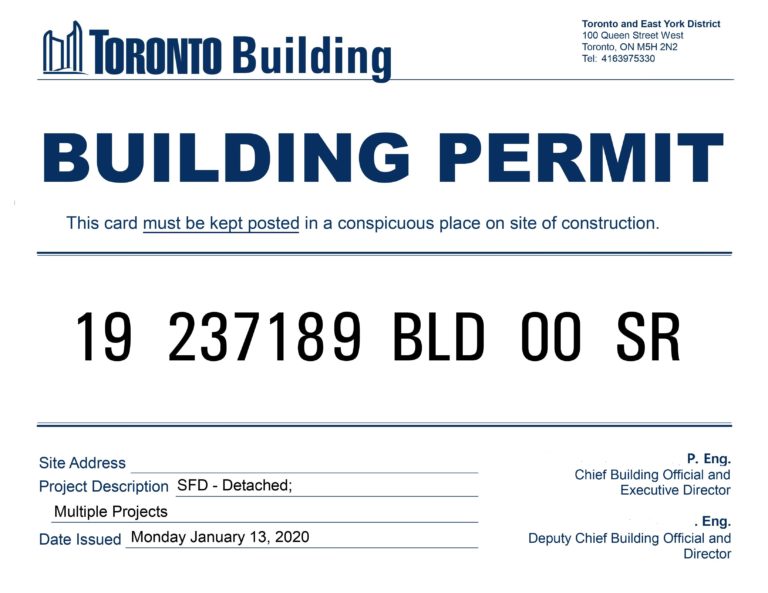Residential Building Permits
A Building Permit is your conventional permission to start the construction, demolition, addition or renovation on your property. As a component of the Building Permit process, the designer should prepare the drawings comply with Ontario Building code and local Zoning By-laws.
Building Code enforcement, including issuing building permits, is generally carried out by municipal building departments, although in the case of on-site sewage systems, enforcement in some areas is conducted by boards of health and conservation authorities.
Construct any new building over ten square meters in area or place another needs to get a residential building permit until the plans and drawings have been review and approved by building staff of the city.
We are experts in various types of new house permits in GTA. info@beyondbuilding.ca offer the best professional building drawings & design services. We will help you follow through your new house application process and obtain permit approval.
The Ontario Building Code is enforced by local municipalities. In this case, the City of Toronto. Some examples of what the Ontario Building Code regulates are:
1. Life safety systems
2. Insulation requirements
3. Plumbing and mechanical systems
4. Fire separation requirements
5. Requirements that apply when the use of a building changes

When is a Building Permit required?
Most construction projects require the property owner to apply for and obtain a residential building permit.
Specifically, a permit is required when you are:
1. Building a new structure that is larger than ten metre squared (108 square feet).
2. Building any addition to an existing structure.
3. Renovating, including alterations that affect your
building’s compliance with building regulations (known as Material Alteration*).
4. Demolishing all, or part of, a building.
5. Installing new, or altering existing, mechanical or plumbing systems.
*Material Alteration refers to alterations that will affect your project’s
compliance with building regulations. For example, if a project involves
alterations to the structural design of the building; mechanical, electrical,
plumbing services; fire separations; and existing fire protection systems; and/or
a change to the use of a building.
How do I get a Residential Building Permit?
Every project is unique and your residential building permit process is determined by the scope of your project. Generally, the permitting process has five steps::
- Determining if your project complies with zoning and applicable laws.
- Drafting your own plans or hiring a qualified designer to prepare your application and drawings.
- Applying for a residential building permit application to the City of Toronto and obtaining a permit.
- Starting construction and calling for your inspections.
Who do I make an application?
Filling out an application might seem simple, but often there are additional types of information and approvals that you have to provide with the residential building permit application form for your application to be considered as complete.
Example: An application for a deck, veranda, or porch
Details of footings, including footing size, spacing, depth, height above grade and frost protection details.
• Sizes and locations of all columns; sizes, locations and spans of all beams.
• Stair construction details, including height and depth of stair treads and headroom above stairs.
• Guard construction details, including information about openings and the location of the guards with
respect to stairways, landings, and edges of the proposed platform.
A site plan must show the following:
• Property lines, lot area, rights-of-way or easements (referenced to a current survey).
• Location of existing/proposed buildings with overall dimensions including setback dimensions
to property lines and adjacent buildings.
• Summary of permitted and proposed zoning provisions to include lot area, building area (GFA),
coverage, and grade elevations to confirm height.
• Dimensions of parking areas, driveways, hard & soft landscape treatments, accessory structures
(sheds, decks, detached garages, etc)




